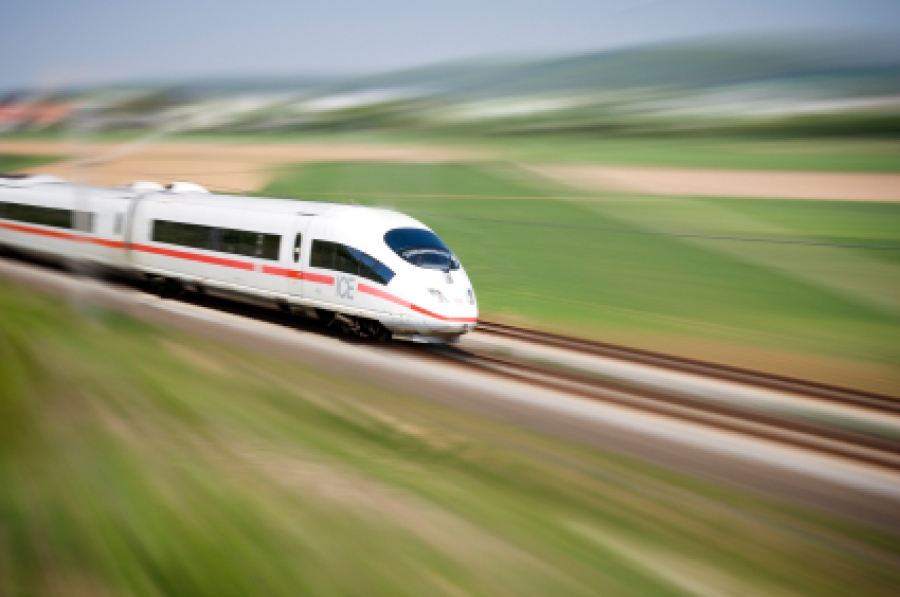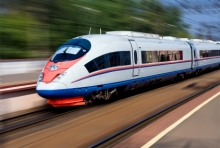Uncertainty Mounts: The Future of High-Speed Rail Development
Mounting concerns over the U.S. federal budget deficit as well as a slower economy may have led some legislators to reconsider their support of President Barack Obama’s campaign to develop high-speed rail (HSR) systems across the United States. The Republican-led House of Representatives has clearly expressed its concerns with allocating government funds for high-speed rail development. The High-Speed Rail Strategic Plan released in April 2009 would have provided $8 billion for HSR development but this plan is now being questioned, and all of its budget money could potentially be cut.

On September 8, 2011, the House Transportation Appropriations Subcommittee responsible for funding transportation programs announced that it planned to eliminate all funding designated for high-speed rail development. Approval at additional levels needs to be gained before the subcommittee’s draft budget for 2012 is approved, so the likelihood is great that the draft budget will see changes before it becomes final. Proponents of high-speed rail are still hoping that the ax will not fall on the much needed funding.
The State of High-Speed Rail
“The future of high-speed rail development in the U.S. is at risk,” says Tom Van Dam, principal engineer and leader of CTLGroup’s transportation practice group. He emphasizes that high-speed rail development is already in process. A great deal of work has already been done when it comes to engineering, construction of rails and ties, and rolling stock work (the manufacturing of passenger cars and locomotives for high speed trains). If funding is cut, many people will lose their jobs and the money already spent on the implementation of high-speed rail may amount to nothing. Despite the fact that some states have partnered with local rail companies to decrease the cost of high-speed rail, without support from the federal government there will be no high-speed rail in the United States, says Van Dam. “If federal funding is pulled, it will die.”
“The energy needed to move people in a high-speed rail car is much lower than the energy needed to move the same people in cars and airplanes. It is very efficient, especially in that 200 to 500 mile range.” Tom Van Dam, principal engineer and leader of CTLGroup’s transportation practice group
While concerns about cost are legitimate and need to be addressed, many benefits come from having a working high-speed rail system in this country. One of the primary benefits that led President Obama to propose the implementation of high-speed rail in the first place is its ability to create U.S. jobs – not just during its development but also once the high-speed rail systems are in place. In many locations a high-speed rail system will meet increasing travel needs. Airports and roads continue to be congested, and for trips of intermediate distance high-speed rail would be a great choice. “When the distance between Point A and Point B is over 500 miles, people will fly. If the distance is 200 miles or under they usually drive. But it is those in-between distances, between 200 and 500 miles, where high-speed rail is a great alternative,” says Van Dam.
High-speed rail systems are very efficient means of moving people that intermediate distance. “The energy needed to move people in a high-speed rail car is much lower than the energy needed to move the same people in cars and airplanes. It is very efficient, especially in that 200 to 500 mile range,” Van Dam says. Additionally, high-speed rail systems create much smaller carbon footprints than alternative modes of transportation.
Current High-Speed Rail Development Path
“The United States is in the competitive fight of its life. Other countries are rapidly advancing their high-speed rail capabilities, while we are in a quagmire. We are unable to make decisions.” Tom Van Dam, principal engineer and leader of CTLGroup’s transportation practice group
High-speed rail development to date has taken two paths: refurbishing and upgrading existing tracks, which will result in a high-speed rail system that can travel at speeds of about 110 miles per hour, or building all new infrastructure, which will enable high-speed travel of more than 200 miles per hour. The choice of which path to take is being decided at the state level and is determined by existing infrastructure as well as the possible partnerships with private rail companies. In California, voters passed a $10 billion project to develop new infrastructure. In Illinois, the Illinois Department of Transportation has partnered with the Union Pacific Railroad to refurbish existing tracks to develop a high-speed rail line between Chicago and St. Louis. This kind of work comes with four concerns, according to Michael Garcia, chief of the Illinois Department of Transportation’s rail division. Garcia recently spoke at an American Rail Engineering and Maintenance of Way Association conference, where he mentioned the following limitations, which resulted in Illinois adopting high-speed rail operating at speeds of up to 110 miles per hour.
-
Curves. High-speed trains are not able to negotiate sharp curves, so existing tracks will need to be straightened.
-
Crossings. Existing crossings will need to be improved before they can be operated by high-speed trains. They need to either separate the grades (meaning that the road or rail will be on a bridge passing over the other) or improve all the grade crossings by using better signaling and barriers to prevent cars/trucks from entering the trackway.
-
Current. High-speed trains will initially be diesel–electric, meaning that they will use diesel engines to operate a generator, which in turn drives the train wheels. These are limited in speed. A high-speed rail system that operates at speeds in excess of 200 miles per hour requires a locomotive powered by electrical current that is transmitted from power plants through overhead catenaries, which are expensive to construct.
-
Capacity. These high-speed trains will be sharing the track with existing trains. The existing track needs sufficient capacity to allow trains of both systems to travel as needed. The problem of sharing track becomes more difficult when high-speed trains travel faster than 110 mph.
While building an all-new system would not carry these kinds of concerns, all-new systems are more expensive. However, all development questions may be moot if the government does not continue to provide funding. It is certain that while the United States grapples with the issue of whether to continue with high-speed rail development, other countries are forging ahead, leaving the United States far behind when it comes to this mode of transportation. In most developed countries, high-speed rail has been in operation for decades. Japan’s first high-speed line was operational in 1964, while Italy opened the first high-speed rail line in Europe in 1978. Van Dam says, “The United States is in the competitive fight of its life. Other countries are rapidly advancing their high-speed rail capabilities, while we are in a quagmire. We are unable to make decisions.”
Van Dam’s hope is that both major political parties can see the importance of developing high-speed rail and support it. He says the question should be looked at by using a systems approach, as another transportation tool that is much needed in the United States today. High-speed rail will not replace cars or planes, but for mid-distance trips it is an excellent alternative for travelers and businesses. “Look at our system in this country. Our transportation system, including high-speed rail, is essential to our economic growth and social and environmental sustainability. It’s easy to see that the high-speed rail arrow in our quiver is essential to our economic viability.”

J. Mariah Brown
J. Mariah Brown is a technical research writer and the owner of Writings by Design, a comprehensive business writing service company that specializes in business development, promotion, and client outreach. She has worked in a variety of technical and non-technical industries including, but not limited to, Government, Non-Profit, Engineering, Translation and Interpretation, Christian and Women’s Publications, and Fashion and Beauty. She is a graduate of the prestigious E.W. Scripps School of Journalism at Ohio University and is currently pursuing a master's degree from Gonzaga University in Communication and Organizational Leadership.



